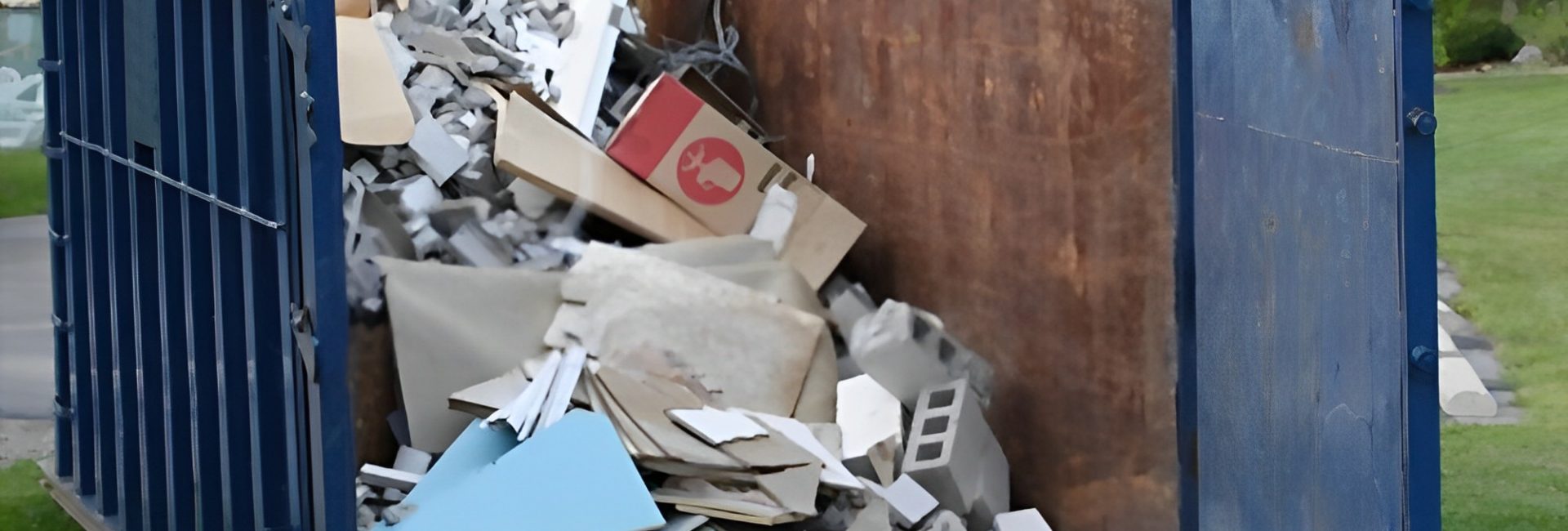
One-third of all refuse in the US is made up by construction waste. This statistic shows that it is crucial to make more use of existing building materials and debris to make significant changes.
The environment is at risk from construction waste. Construction industries must find ways to manage the construction waste and demolition materials generated during construction.
Construction and demolition materials are made up of the debris generated by construction, renovation, demolition, and reconstruction of roads and buildings. These are examples of demolition and construction materials.
- Concrete
- Wood
- Asphalt
- Metals
- Bricks
- Glass
- Rocks
Reduced disposal of C&D material has many benefits
- This will lead to increased employment and economic activity in the recycling industry. In areas that deconstruction or selective demolition is used, this will increase business opportunities in the local area.
- Reduced overall project costs through avoided purchase expenses and the donation of recycled materials to qualified charities. This provides a tax benefit. Material reuse on-site also reduces transportation costs.
- There are fewer disposal facilities, which helps to reduce environmental problems.
- Reuse landfill space.
- The environmental impact of the extraction and consumption virgin resources as well as the production of new materials are offset.
Recycle, Reduce, Divert, and Reuse C&D Materials
By practicing source reduction, salvaging and recycling existing materials, you can divert demolition and construction materials from being disposed of. You can also purchase used and recycled materials.
1. Reduce
Source reduction can help reduce the material and energy consumption, as well as waste generation. Solid waste should be addressed as a priority. Source reduction is key to reducing waste production. This can be done by preserving buildings and not constructing new ones. It also means that buildings are designed to last longer and can be disassembled and reused. Reduced construction and demolition debris can also help conserve landfill space and reduce the environmental impact of making new materials. It can also lower overall project costs by avoiding purchase.
2. Divert and reuse
You can divert demolition and raw construction debris and use it as a resource. You can divert some materials like:
- Land clearing and landscape debris
- Asphalt pavements
- Gravel and aggregates
- Concrete
- Masonry scrap and rubble
- Clean wood
- Plastics
- Insulation materials
It is a great way to save money and preserve natural resources by reusing valuable demolition and construction materials. There are many ways to deconstruct and save usable materials. These are some of the benefits that deconstruction offers:
- Maximizes material recovery
- Conserves finite forest resources
- Offers job opportunities
- Community economic activity around the reprocessing or manufacturing of salvaged materials.
- Diverts demolition debris bound to disposal
3. Recycle
Many building components can be recycled , as well as construction debris. Concrete and rubble can often be recycled to make concrete and aggregate products. You can also recycle wood into engineered wood products, such as furniture. Recycle valuable metals such as steel, copper and brass.
There are three ways to recycle waste
- Site-separated : This method uses multiple boxes to separate each type of waste. The job site separation of construction waste can provide immediate feedback to all workers and help ensure that recycling goals are met. Site separation promotes responsibility on the jobsite and is the best way to achieve diversion goals. However, it takes up more space and requires high levels of supervision.
- Commingled Recycling: This kind of recycling requires one container. The hauler will sort everything off-site. It makes it easier to manage waste on-site for field staff. Commingled recycling is a great option for sites with limited space. It requires very little storage space.
- Hybrid Recycling : This kind of recycling incorporates site-separation as well as commingled. One box can be used for wood, concrete and non-recyclable materials. Hybrid recycling offers the best of both. This optimizes the weight and minimizes the sorting effort. You can reduce the total number of boxes by using phases. This reduces the work of haulers who have to sort boxes, and reduces hauling costs.
The construction manager must assess each project’s requirements and location in order to determine the best method of recycling waste. These are some questions that can be used to assist with this:
- What number of waste containers are you able to store?
- Where will they be located?
- Do you want to use a trash chute?
- Are you sure it is a high-rise building?
- Are you able to do high-level construction and demolition diversion projects?
- Is there enough staff available to provide the required supervision?
- Are there any changes to the waste generated during this project?
Engineers and construction firms should promote sustainable, eco-friendly construction. Regular site inspections should be conducted to ensure that construction waste management systems are properly functioning. Safe waste disposal is possible by renting Construction dumpster rental in Orlando. The haulers must submit monthly construction reports. Weekly monitoring should be done on waste recycling and hauling. The most important thing is that the actual performance must meet or exceed the project goals frequently. For further details, check out affordable dumpster rental Orlando.


